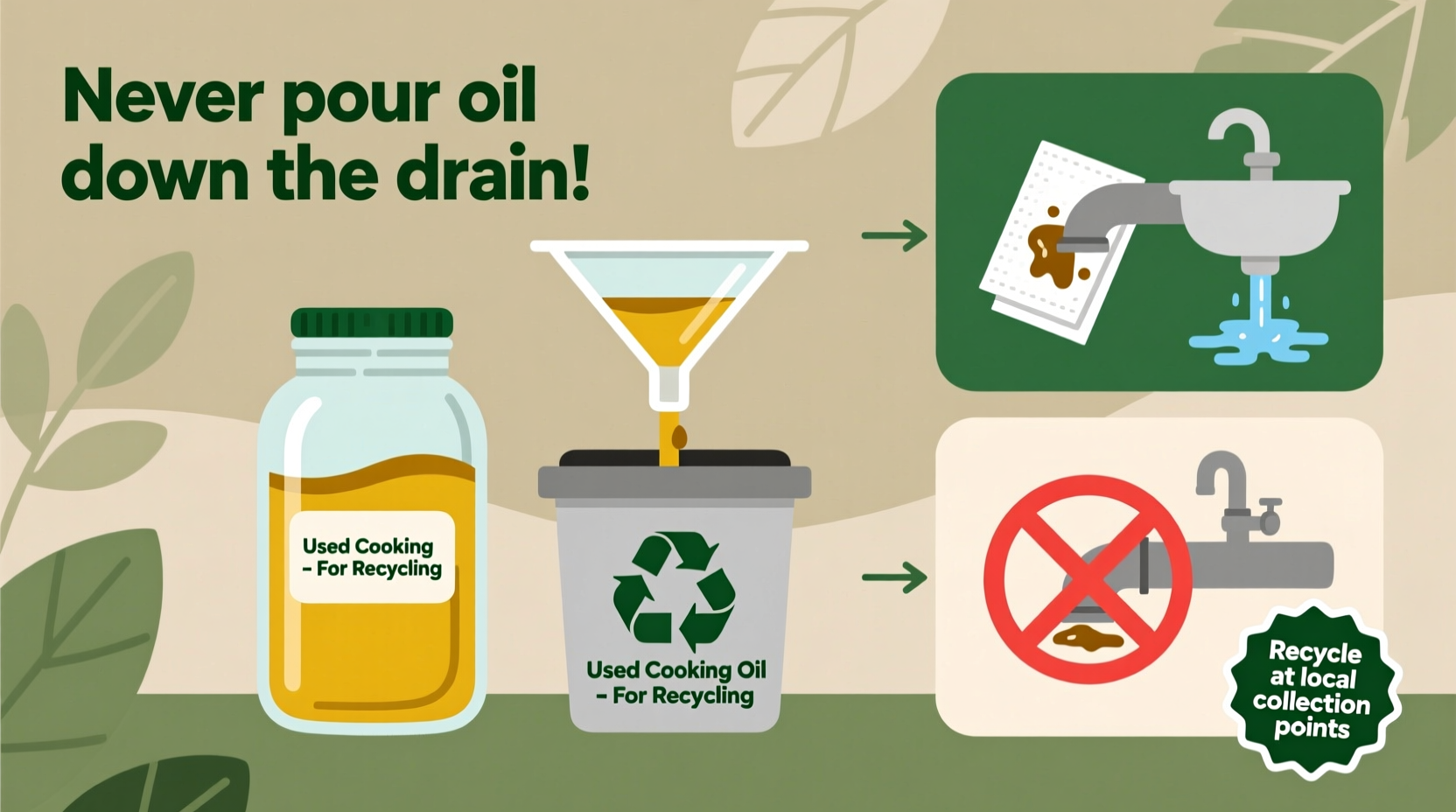Properly dispose of cooking oil by cooling it completely, transferring to a sealed non-recyclable container, and placing in the trash. Never pour oil down drains—it creates fatbergs that damage sewer systems. For recycling options, check with local waste management for grease collection programs. Small amounts can solidify with absorbents like cat litter before disposal.
Used cooking oil disposal seems simple, but improper methods cause serious plumbing issues and environmental harm. Each year, municipalities spend over $100 million clearing fatbergs—congealed masses of grease and debris—from sewer systems, according to the Environmental Protection Agency. This guide provides verified, practical methods that protect your pipes and the environment.
Why Proper Oil Disposal Matters
When hot oil enters drains, it cools and solidifies, trapping other waste to form massive blockages. These fatbergs can grow to hundreds of feet long and require specialized equipment to remove. The EPA reports that fats, oils, and grease (FOG) cause 47% of all sewer overflows in the United States. Beyond plumbing disasters, improper disposal contaminates waterways and harms aquatic ecosystems.
Step-by-Step Disposal Methods
Cooling and Containing Used Oil
Never pour hot oil directly into containers—it can melt plastics or cause spills. Follow these steps:
- Let oil cool completely in the cooking vessel (minimum 2 hours)
- Use a funnel to transfer to a leak-proof container (glass jar or metal can)
- Seal tightly before placing in regular trash
For Small Quantities: Solidification Method
For tablespoons of oil remaining in pans:
- Apply absorbents like coffee grounds, cat litter, or paper towels
- Let sit 10 minutes until oil solidifies
- Scrape into compost bin (if oil-free of meat products) or trash
| Disposal Method | Best For | Environmental Impact |
|---|---|---|
| Cooling & Trash Disposal | Home kitchens (under 1 quart) | Low (landfill) |
| Recycling Programs | Restaurants (5+ gallons) | High (converted to biodiesel) |
| Solidification | Small amounts (tablespoons) | Medium (compostable options) |
| Grease Traps | Commercial kitchens | High (requires professional maintenance) |
Oil Recycling: Turning Waste into Resource
Used cooking oil transforms into biodiesel through professional recycling. The EPA's FOG programs show that recycling just 1 million gallons of used oil produces enough biodiesel to power 10,000 homes for a month. Check these resources:
- Earth911's recycling locator for drop-off sites
- Municipal waste management websites (search "[your city] cooking oil recycling")
- Local restaurants that may collect oil for biodiesel companies

What NOT to Do With Used Cooking Oil
Avoid these common mistakes that cause costly damage:
- Pouring down sinks—Even hot water won't prevent solidification in pipes
- Flushing with dish soap—Soap emulsifies oil temporarily but doesn't prevent blockages
- Putting in compost bins—Oil disrupts decomposition and attracts pests
- Reusing excessively—Oil degrades after 2-3 uses, creating harmful compounds
Context-Specific Disposal Guidelines
Disposal methods vary based on oil type and quantity:
- Vegetable oils (canola, sunflower): Recycle or solidify for trash disposal
- Animal fats (bacon grease): Must solidify before disposal—never pour
- Deep frying oil (5+ gallons): Requires professional recycling—contact local waste management
- Oil contaminated with food: Dispose in trash—recycling facilities reject impure oil
Evolution of Cooking Oil Disposal Practices
Oil disposal methods have evolved significantly as environmental awareness grows:
- 1970s-1990s: Common practice to pour oil down drains with hot water
- 2000s: Municipalities introduced grease trap regulations for restaurants
- 2010s: Biodiesel conversion programs expanded to residential areas
- 2020s: Many cities now offer curbside collection for household cooking oil
Sustainable Reuse Options (When Safe)
Only reuse oil when it meets these criteria:
- Used for frying vegetables or non-battered foods
- No strong odors or dark discoloration
- Filtered through cheesecloth to remove particles
- Reused within 48 hours and stored in airtight container
Note: Never reuse oil that's been used for frying meat, especially poultry or fish, due to bacterial contamination risks.
Finding Local Disposal Resources
Access these verified resources for location-specific solutions:
- EPA FOG Programs Directory—Official municipal program listings
- Earth911 Recycling Locator—Interactive map of drop-off sites
- Your city's public works department website—Search "cooking oil disposal [your city]"











 浙公网安备
33010002000092号
浙公网安备
33010002000092号 浙B2-20120091-4
浙B2-20120091-4